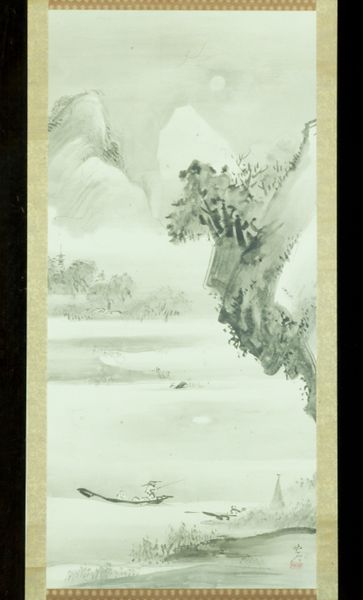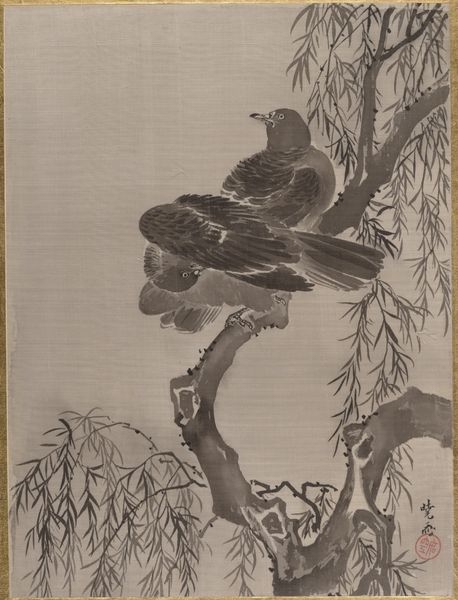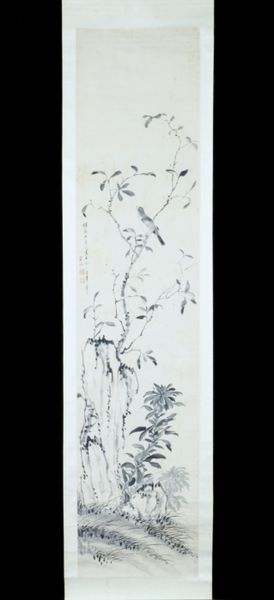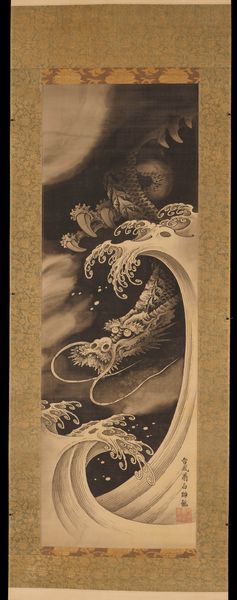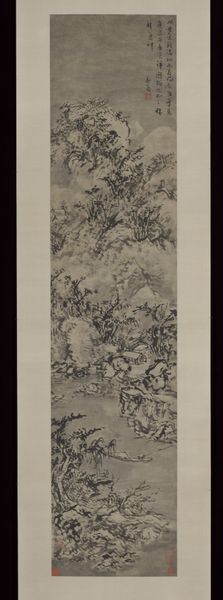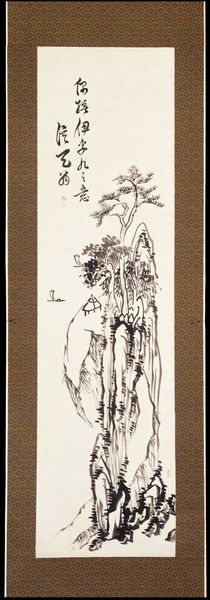
drawing, paper, ink-on-paper, hanging-scroll, ink
#
drawing
#
ink drawing
#
ink painting
#
asian-art
#
landscape
#
paper
#
ink-on-paper
#
hanging-scroll
#
ink
#
abstraction
#
calligraphy
Dimensions: 46 x 10 3/4 in. (116.84 x 27.31 cm) (image)
Copyright: Public Domain
Curator: Here we have a captivating ink-on-paper hanging scroll entitled "Landscape," attributed to Hosokawa Rinkoku, likely created sometime in the 19th century. Editor: The immediate impression is breath—it feels light, almost wispy. The composition is strikingly minimal; it has that wonderful Zen quality of saying so much with so little. Like a visual haiku. Curator: Indeed. Rinkoku's work fits into a broader context of landscape painting becoming increasingly accessible to the literati class of the Edo period. Artists such as Rinkoku produced artworks for scholars and intellectuals who were interested in incorporating artistic and spiritual contemplation into their lives. The hanging scroll format allowed it to be displayed easily within the small apartments and study areas in cities such as Edo and Osaka. Editor: I find the strokes, especially around the craggy rocks, utterly beautiful. So decisive! It's more than just depiction. It has a pulse; it feels like a record of a mind in motion trying to grasp something that’s otherwise intangible. You almost forget that its ink. Curator: And that reduction is very much a philosophical statement. The blank spaces carry just as much significance as the ink itself. Reflecting concepts central to both Daoism and Zen Buddhism, the landscape is meant to offer moments for meditation and reflection and be contemplated. Editor: Do you think Rinkoku himself thought about viewers looking at the painting now and what they could bring to it? Curator: That's a fascinating question. As art's social function broadened in the Edo period, with artwork being more broadly produced for commercial purposes than ever before, it may be reasonable to suggest Rinkoku could have intended to cultivate a sense of harmony in society, subtly inspiring a kind of collective emotional calm and social order, to remind people of an idealized connection with nature at a time when such was harder and harder to find in cities. Editor: What a gorgeous reminder of simplicity in a world that increasingly insists on complexity. Curator: It serves as an example of how an art form is so influenced by politics, public display and reception.
Comments
No comments
Be the first to comment and join the conversation on the ultimate creative platform.


